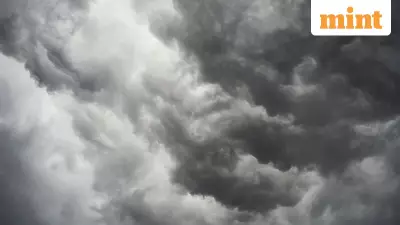
As winter blankets the landscape with snow and temperatures plummet, wildlife faces its toughest challenge. The bitter cold, limited food sources, and freezing conditions test the limits of survival. Yet, nature has equipped certain remarkable creatures with extraordinary adaptations that allow them not just to survive, but to thrive in these extreme environments.
Masters of Arctic Survival
These animals have evolved over millennia, developing specialized physical traits and behaviors that defy the harsh realities of winter. Their survival strategies range from growing insulating layers to undergoing physiological changes that would be impossible for most other species.
Polar Bears: Kings of the Arctic
Polar bears stand as the ultimate symbols of winter endurance. These magnificent creatures are perfectly designed for life in the Arctic, where temperatures can plunge below -40°C. Their survival secret lies in two crucial adaptations: a double layer of thick fur and a substantial blubber layer beneath their skin.
The polar bear's fur does more than just provide coverage - it traps air to create additional insulation against the biting cold. Their wide, furry paws function like natural snowshoes, distributing their weight evenly and preventing them from sinking into the snow. This unique foot structure enables them to walk effortlessly across ice and hunt their primary prey: seals.
Musk Oxen: The Huddled Giants
Musk oxen present a fascinating example of social survival in the Arctic tundra. These large, sturdy animals possess a remarkable two-layer coat system. Their heavy outer coat protects them from wind and moisture, while the dense undercoat called qiviut provides exceptional insulation that's even warmer than sheep's wool.
What makes musk oxen particularly interesting is their social behavior during winter. They gather together in groups, huddling closely to share body heat and protect each other from freezing winds. Their sharp, strong hooves become essential tools for digging through snow to reach the vegetation buried beneath, ensuring they maintain their nutrition throughout the harsh season.
Arctic Hares: The Seasonal Chameleons
Arctic hares demonstrate nature's brilliance in seasonal adaptation. These nimble creatures sport thick white fur during winter that serves dual purposes: it provides essential warmth while offering perfect camouflage against the snowy terrain. Come summer, their coat transforms into brownish shades, blending seamlessly with the changing landscape.
When the cold becomes particularly severe, Arctic hares employ clever sheltering tactics. They dig into snow banks to create insulated burrows that protect them from icy winds and predators. Their powerful hind legs enable rapid movement across snow-covered ground, providing a crucial escape mechanism during the most challenging winter months.
Mountain and Sky Survivors
Snow Leopards: Ghosts of the Mountains
Snow leopards navigate some of the world's coldest mountainous regions with graceful efficiency. Their entire body, including their exceptionally long and fluffy tail, is covered in dense fur. This tail serves a practical purpose beyond balance - snow leopards wrap it around themselves like a warm scarf for extra insulation during rest.
These elusive big cats have evolved powerful legs capable of making incredible leaps between rocky ledges. Their thickly padded paws act as natural snowshoes, preventing them from sinking into deep snow while also providing traction on icy surfaces.
Snowy Owls: Silent Winter Hunters
Snowy owls are perfectly equipped for frigid Arctic climates, boasting thick, layered feathers that effectively trap warmth and insulate them from extreme cold. Their brilliant white plumage provides excellent camouflage against snowy backgrounds, helping them avoid detection by both predators and prey.
These majestic birds employ keen eyesight and nearly silent flight to hunt in snow-covered open areas. They primarily feed on small mammals like lemmings, using their exceptional hunting skills to maintain energy levels throughout winter. Their ability to perch and wait patiently for prey makes them highly efficient predators in challenging conditions.
Each of these five animals demonstrates that with the right adaptations, life can not only persist but flourish in even the most extreme winter environments. Their survival strategies continue to inspire scientists and nature enthusiasts alike, reminding us of nature's incredible resilience and innovation.





